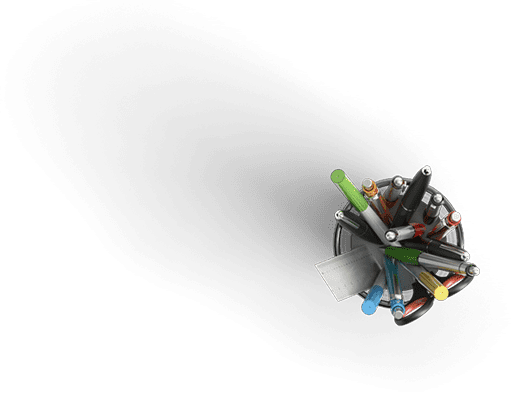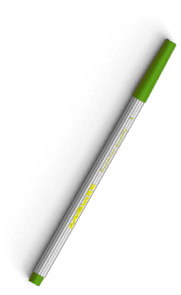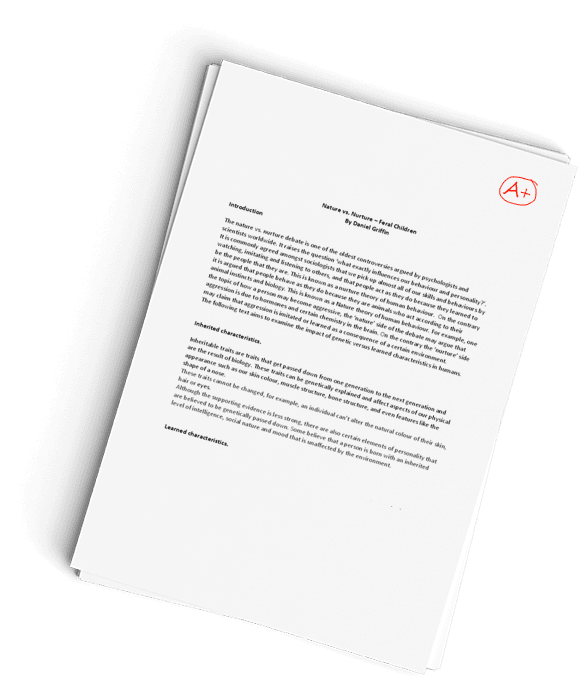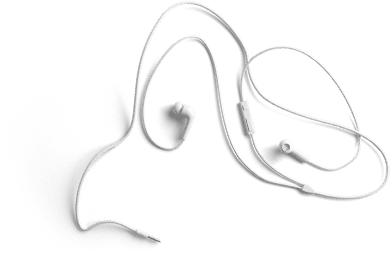NURS 4220 Walden University Wk 3 Strategies Used to Improve Pain Management Discussion
Question Description
DISCUSSION
Shannon Carter
RE: Sources of Reputable Online Info 🙂
WK3DisscCarterS
The strategies used to improve pain management in the geriatric unit were successful. Good data was used from 6 days of inpatient information to formulate a plan. Hospital Consumer Assessment of Health Plans Survey (HCAHPS) is a standardized survey that measures patient’s perspectives of hospital care by collecting data and publicly reporting results so that the quality of care provided is transparent (cms.gov, 2020). A run chart was formed. There were some weak areas notated from the run chart, being a poorly attended educational meeting from the staff. However, the effective strategy showed a 25% increased in patient satisfaction scores than what it has been. The score from this unit was in the lower 70’s with 85% being very satisfied. The run chart supported the nurse’s decisions with the importance of teaching patient pain management and offering the nurses ANCC contact hours.
The performance improvement plan used was the PDSA; Plan, Do, Study, and Act. This process is used to make sure that improvements are data-driven (Yoder-Wise, 2019). However, ISE showed a poorly attended meeting for attitudes towards addictions in pain management for patients. The leadership can be confident that the QI team summarized strategies, and promoted progress @ the end of the year by having an effective Run chart to decide how well or how poorly the process was performing. The improvement tool contributed to the outcome by defining the problem and adding strategies for improvements based on data from the surveys and inpatient interviews to improve patient satisfaction scores.
Data guides the clinical team to make the needlepoint of patient care in the right direction for team members and patients (Spath, 2018). The Nurse Manager/CNO can count on the team for improvement when the Run chart is utilized to help the team decide how well or how poorly a process is performing. 100 % of the information from the survey was used to improve patient satisfaction scores. All the information was used to formulate a Run chart to illustrate how the process is running.
Reference
Spath, P.(2018). Introduction to Healthcare quality management (3rd ed.). Chicago, IL. Health Administration Press. PDSA (p. 124) Chapter5.
Yoder-Wise, P.S. (2019). Leading and Managing in Nursing (7thed.). St. Louis. MO: Mosby.
Cms.gov. 2020.HCAHPS: Patients’ Perspectives of care survey/cms. [online] Available at: https://www.cms.gov/Medicare/Quality-Initiative-Patient- Assessment Instruments/Hospital Quality Inits /Hospital HCAHPS[Accessed 27 October 2020].
Christina Oxendine
RE: Discussion – Week 3
Improving patient satisfaction scores in relation to pain management is the primary goal for the inpatient geriatric medical nursing unit and increasing scores to meet the national benchmark scores when being compared to similar units. Benchmarking is the measurable performance tool used to compare various organizations performance levels and determine if they are above or below national standards (Spath, 2018). Currently, the units satisfaction score regarding pain management is in the low 70s compared to other units scoring around 85% indicating they are very satisfied. HCAPHS is a standardized survey that measures patients perspectives of hospital care by collecting data and publicly reporting results so that the quality of care provided is transparent (cms.gov, 2020).
Strategies and interventions that were implemented to increase pain management score to meet national standards for the unit ranged from 01/2014 to 03/2016. According to the run chart results, satisfaction scores did not begin to increase until 03/2015 when EMR data on pain medication effectiveness was reviewed in QI team which resulted in meetings with staff to determine effective strategies and the implementation of a rapid cycle improvement model and a Plan-Do-Study-Act Cycle (PDSA). Once these strategies were implemented a sustainable change was noted on the nursing unit with patient satisfaction scores increasing to almost 100%. The nurse manager can expect to see the unit exceed the national benchmark for the next quarter by continuing to meet monthly with the improvement team to discuss performance measures in place and to ensure continuous improvement is occurring. According to Spath, to evaluate if changes were successful they should be implemented on a wider scale and modified if needed and repeat to gain greater insight to the problem and allow the improvement team to add or take away from success and failures so that the next process change can be beneficial (Spath, 2018).
After the rapid cycle improvement model was implemented, the run chart showed an improvement in patient satisfaction scores related to pain management and the interventions implemented resulted in a 100% satisfaction rate in 03/2016, which supports the nursing units decision to celebrate. Leadership can be confident that the trend will continue by ensuring that monthly meetings are still being held to discuss improvement methods and make changes if needed. During the meetings, a run chart can be reviewed so the team can review patient satisfaction scores and compare monthly data. A run chart is an analytical tool that is used for quality improvement and allows users to visualize the performance of processes and preserving the time order of data (Perla, Provost, & Murray, 2011).
References
Cms.gov. 2020. HCAHPS: Patients’ Perspectives Of Care Survey | CMS. [online] Available at: [Accessed 26 October 2020].
Perla, R. J., Provost, L. P., & Murray, S. K. (2011). The run chart: A simple analytical tool for learning from variation in healthcare processes. BMJ Quality & Safety, 20(1), 46. doi:http://dx.doi.org.ezp.waldenulibrary.org/10.1136/b…
Spath, P. (2018). Introduction to healthcare quality management (3rd ed.). Chicago, IL: Health Administration Press.
PRACTICE EXPIERENCE
Christina Oxendine
RE: Group B Practice Experience Discussion – Week 3
Process improvement models are implemented into healthcare and utilized for improvement methods and to ensure continuous improvement. When focusing on readmission rates within 30 days for patients with CHF and reviewing process improvement models, the model I chose to focus on to assist in quality improvement is the FADE model. The FADE model is a performance improvement tool that was adapted as part of the PDCA cycle and consist of four phases (Spath, 2018). The four phases of the FADE model includes:
Focus-Selecting a problem and explaining it
Analyze-Gathering data to support there is a problem
Develop-Determine a solution and create a plan to utilize the solution
Execute-Implement the plan and monitor results and make changes as needed
When applying this plan to my practice experience project related to reducing readmissions of CHF patients within 30 days I was able to identify and create a quality improvement method by implementing the FADE model.
Focus- Focus on reducing the readmission rates of patients with a CHF diagnosis within 30 days and place emphasis on appropriate discharge teaching.
Analyze- Gather data with the number of patients readmitted within 30 days of discharge and review any current interventions being utilized such as patient discharge teaching and treatment being utilized as well as length of stay during admission.
Develop- Create an action plan to ensure patients are receiving the proper discharge teaching and given information related to follow up appointments and available resources. Ensuring a team approach is taken and collaboration with the patient’s primary care provider.
Execute- Execute the implementation of the plan and interventions created regarding education about diagnosis and discharge teaching and monitor the effectiveness of them when data reports are ran and make changes as needed if readmission rates are still high.
According to Spath, the FADE model is beneficial for all types of performance problems and is useful when focusing on a problem, analyzing the problem and its causes, creating and implementing solution, and monitoring the success of interventions utilized (Spath, 2018). When I discussed process improvement models with the quality team and care management at my organization, they were in agreeance that this model was beneficial for my particular focus with reducing readmission rates.
Reference
Spath, P. (2018). Introduction to healthcare quality management (3rd ed.). Chicago, IL: Health Administration Press.
Allison Wright
RE: Group B Practice Experience Discussion – Week 3
Main Post
According to Spath, once an opportunity for performance improvement is found, the team must fully understand the cause before attempting a change. Analytic tools are used by QI teams to evaluate the current process and choose interventions that result in a sustainable change (Spath, 2018). Additionally, the author highlights the need for a defined and systematic approach, or model, to guide the implementation of quality improvement tools. Process improvement plans that follow a model are shown to produce continuous favorable change. (Spath, 2018).
I have chosen to apply the FADE quality improvement model to develop my improvement plan to decrease the rate of severe hypoglycemia events in the hospital setting. A variation of the PDSA/PDCA rapid improvement cycle, FADE’s four-phase method, is an appropriate model for all kinds of performance opportunities (Spath, 2018).
When adapting the FADE model to focus on my specific practice improvement project, the results are as follows:
Focus: Define and verify the opportunity to be improved.
Severe hypoglycemia events in the hospital are preventable medication administration errors. The network’s evidence-based protocols follow nationally set guidelines with the support of The Joint Commission. Performance opportunities are within the management or misuse of these protocols, verifiable by the measured rate of episodes occurring within the hospital.
Analyze: Collect and study data performance data and identify root causes.
Gather available data surrounding all events that have occurred beginning January 2020 and do a root cause analysis. A cause and effect diagram shows the relationship between influencing factors and outcomes and could be used to determine all possible causes of deviation from policy/procedure. The Five Whys tool would allow us to explore the “what and why” of the practice problem. This tool helps the QI team get to the root of the situation by asking “why” repeatedly until the core problem is uncovered (Spath, 2018, Chapter 6).
Develop: Design action plans for improvement, implementation, communication, and monitoring.
To capture the step-by-step details and all people/departments involved, I will use a deployment flowchart to develop a solution for the identified problem and the implementation of the solution strategies (Spath, 2018, p. 155).
Execute/Evaluate: Implement the action plan and institute a process control system to measure/monitor results. Adjust the action plan if needed.
The last step in the quality improvement process is implementing the action plan and monitoring/measuring the results—evaluating the results every 60-90 days to allow for timesaving, waste reducing, and cost-efficient practice adjustments. Histograms or line charts are valuable tools used to show performance change over time. This visual tool will be helpful when reporting results, as they are easy to understand. The information gathered could then be added to a dashboard (tabular report) of Glycemic Control Measures (Spath, 2018, p. 95).
When I spoke with my mentor and leadership members regarding the process improvement model choices and next steps, we all agreed that policy change or re-writing a protocol was not likely to be needed. The opportunity appears to be within the execution of those plans already written. If the quality improvement plan is successful, it could then be shared or “spread” across all units/sites, following the same protocol. Having a process for spreading within a network saves time and money and helps alleviate patient outcome variability. (Wolak et al., 2020).
References
Spath, P. (2018). Introduction to healthcare quality management, third edition. Health Administration Press.
Wolak, E., Overman, A., Willis, B., Hedges, C., & Spivak, G. F. (2020). Maximizing the benefit of quality improvement activities. Journal of Nursing Care Quality, 35(3), 199–205. https://doi.org/10.1097/ncq.0000000000000438
Have a similar assignment? "Place an order for your assignment and have exceptional work written by our team of experts, guaranteeing you A results."








